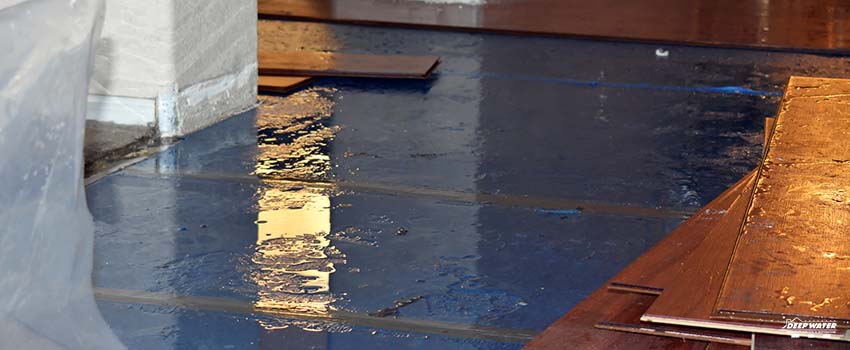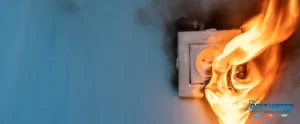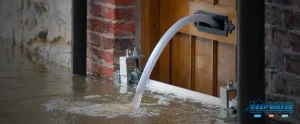Water damage is a common problem in many households either because of plumbing issues or when natural disasters like floods suddenly strike. To keep your properties protected, you can have them covered by an insurance policy; however, It’s important that you have a clear understanding of what this will cover and what it won’t so you don’t end up paying expensive monthly premiums.
In any case, most insurance companies provide water damage insurance if the disaster occurs suddenly and unintentionally. However, this will not cover damage that took place due to lack of maintenance. This may sound simple enough, but it can be difficult to understand, so you have to talk to your insurer so he can explain the details of your insurance policy.
Types of Water Damage
Water damage is classified into three general categories which you should try to understand before getting your home covered by water damage insurance. This way, you’ll be in a better position to strike a fair deal with your prospective insurer.
Category 1
Under this category falls “clean water” that overflowed from sinks and that which sprang from broken pipes. This problem can be resolved in 48 hours or less, and this should be the case; otherwise, the water could eventually become exposed to contaminants. If this happens, possible water damage will move up to Category 2.
Category 2
This category involves gray water discharged by home appliances like a dishwasher or a washing machine. These are considered chemical wastes and include leftovers from detergent, soap, and laundry cleaners.
Because gray water can encourage microbial growth, this water damage category could pose mild to serious contamination risks for anyone. The severity could get worse over time so you and your family should be cautious as both direct and indirect exposure to contaminated gray water can have a negative impact on personal health.
Category 3
This is the most serious category of water damage and involves black water from the sewers and water containing grease or oil. This type of water damage is dangerous because it can quickly be infected with bacteria, viruses, and other toxic allergens.
According to research, the likelihood of contracting an illness or infection from direct or indirect exposure to blackwater is greater than 90%.
Water Damage Conditions Covered by Insurance
Does a homeowner insurance cover water damage? The answer is yes, most standard home insurance policies will cover water damage if it meets any or all of the following conditions:
1. Sudden and Accidental
This means that for water damage to be covered, it should have occurred inside the house and the cause was due to an accident like a leaking water heater. The insurance company will cover the cost of repairing the damaged flooring because of the leak from the heater, but it will not include the expenses you’ll incur for fixing or repairing the leaking appliance.
There’s usually an additional stipulation in this type of water damage insurance coverage, and that’s the condition that the leaking water from the heater must not have reached or touched the outside ground.
2. Extreme Weather
In this type of water damage insurance, if a storm causes trees to fall down and cause pipe damage or it brings rain water into the house, then the insurer will cover the cost of repair either for the pipe or for the house itself.
3. Fire-Based Water Damage
Water used to extinguish fires can cause damage to property and belongings. Specifically, pressure coming from fire hoses can bring ruin to a house instead of saving it. The good news is that this type of water damage can be a valid ground for an insurance claim.
Once the fire is extinguished take a picture or record the water damage that has been brought to your property. Also, list down the items or appliances inside the house that were damaged. All of these documents, including the photos and videos, should form part of your water damage insurance claim list that you can submit to your insurance company and should help speed up the claims process.
4. Mold Growth
Mold growth usually follows many water damage incidences. Within 24 hours after the disaster, mold spores have already established a presence in your house. They will eventually destroy your drywall, floorboards and wood, but you can rest in the fact that mold growth due to water damage is covered by most insurance policies.
The key is to photograph or record the damage to your property. It’s also a good idea to prepare a list of the places where the molds grew soon after water damage. Document anything that has been adversely affected by mold growth. This should give you a good chance of having a successful insurance claim.
5. Vandalism
Vandalism or intentional destruction of water and sanitation facilities by unauthorized persons is not uncommon. However, this is not often used as basis for filing an insurance claim under the water damage category even if coverage is commonly extended.
The rationale is that vandalism of valuable metal pipes, fittings, and manhole covers exposes the sewer system to disrepair and makes it susceptible to water damage. Unfortunately, there is little to no documentation about how reduced cases of vandalism can lead to better water and sanitation services.
Water Damage Conditions Not Covered by Insurance
If unexpected accidents or events that lead to water damage are covered by insurance, then those that are expected to happen soon are not. Simply, put, if the problem is something that you could avoid but you ignored it, the insurance company will not pay you for the resulting inconvenience. The following falls under this condition:
1. Plumbing Maintenance
A good example of this would be an overflowing washing machine. If the overflow resulted in damaged flooring, the latter will be covered. However, if your insurer determines that the overflow occurred because there was no maintenance performed on your washer, then the damaged flooring will not be considered insurable.
2. Repair and Replacement
If your water heater is leaking and this caused a ruined home floor, this should be covered by your water damage insurance. Repairing the heater or getting a replacement, however, is usually not included in your insurance policy.
3. Sewage Backups
There’s usually a provision in many standard insurance policies where it clearly says that water damage resulting from a sewage backup is not covered. Insurers, however, often offer an endorsement to homeowners where sewage backup water damage gets covered but at an additional cost.
4. Flood
Typically, water damage caused by flood is not included in any insurance policy. Instead, there’s a separate coverage known as flood insurance that seeks to provide protection against this common natural disaster.
Key Takeaway
Insurance policies are effective means of keeping yourself, your family, and your property protected against disasters. Water damage, however, is unique because certain conditions must be existing before your insurance claim can be approved. Thus, it’s important that you know what water damage conditions will be covered and what will not. This should help you determine the type of water damage insurance suitable for your particular situation.
Get help from Deep Water Emergency Services & Mitigation for your water damage problems.
Water damage exposes you to various risks. Deep Water Emergency Services & Mitigation is here to help ensure that this problem is resolved right away.
Our team of water damage mitigation Colorado Springs specialists will work with you all the way using advanced technology and sophisticated equipment to ensure that you can recover from the disaster quickly. We’ll even help you out when you file your water damage insurance claim. Call us now so we can help you rebuild your home and your life.






